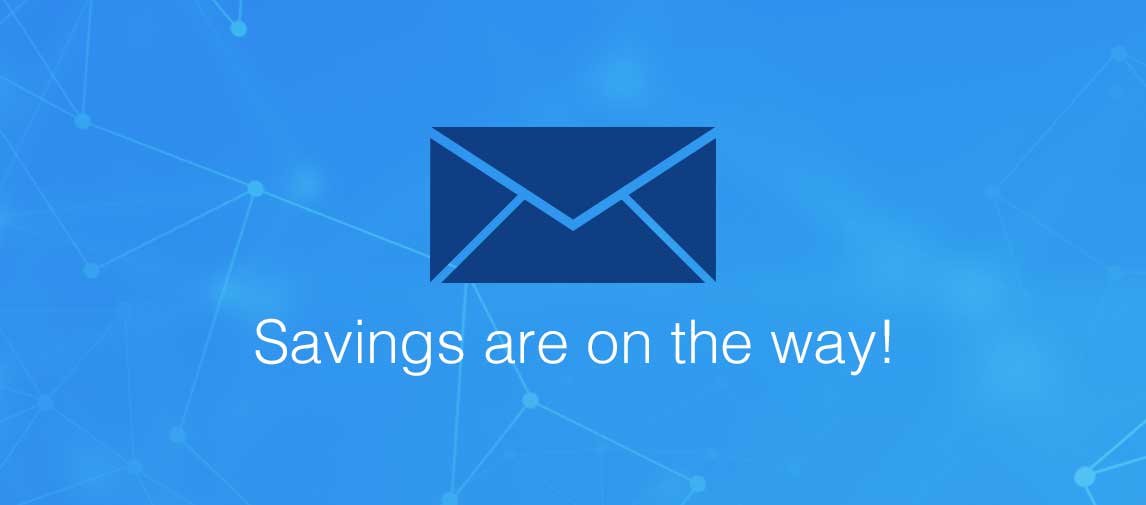title
Please take a moment to fill out this form. We will get back to you as soon as possible.
All fields marked with an asterisk (*) are mandatory.
Other Programming Languages Training Courses
Explore our course catalog for the most popular Open Source Programming Languages and learn the skills you'll need to succeed in your organization's project.

Course List
-
Advanced Angular
WDJS-305
Students learn to build web applications via a series of hands-on exercises. Each hands-on exercise consists of a series . . .
- Duration: 2 Days
- Scheduled Classes : 5 Scheduled Classes
- Delivery Format: Classroom, Virtual
-
Introduction to Angular | Angular Essentials JumpStart
TT4165
Introduction to Angular | Angular Essentials JumpStart is a three-day, hands-on course that thoroughly explores the latest . . .
- Duration: 3 Days
- Scheduled Classes : 5 Scheduled Classes
- Delivery Format: Classroom, Virtual
-
Mastering Angular Developer Boot Camp | Essentials, Best Practices, Testing, Forms, RxJS & More
TT4168
Updated for Angular 11 and beyond, and geared for experienced web developers, Mastering Angular provides you with hands-on . . .
- Duration: 5 Days
- Scheduled Classes : 5 Scheduled Classes
- Delivery Format: Classroom, Virtual
-
C Programming
PLCC-110
This C Programming course is designed to provide students with a good working knowledge of the C Programming language. Students . . .
- Duration: 5 Days
- Scheduled Classes : 6 Scheduled Classes
- Delivery Format: Classroom, Virtual
-
C++ for Non C Programmers
PLCC-235
This course is designed to provide students with a solid foundation in C++ for those without any C programming experience. . . .
- Duration: 5 Days
- Scheduled Classes : 3 Scheduled Classes
- Delivery Format: Classroom, Virtual
-
ELK And X-Pack
ELK-100
ElasticSearch is one of the leading search platforms. With LogStash, added for log collection, and Kibana for the dashboard, . . .
- Duration: 4 Days
- Delivery Format: Classroom, Virtual
-
Go Advanced
PLGO-102
Go, or “C for the 21st century” is an open-source programming language that makes it easy to build simple, reliable, and . . .
- Duration: 3 Days
- Delivery Format: Classroom, Virtual
-
Go Introduction
PLGO-101
Go, or “C for the 21st century” is an open-source programming language that makes it easy to build simple, reliable, and . . .
- Duration: 2 Days
- Delivery Format: Classroom, Virtual
-
Getting Started with Groovy and Grails
EJCJ-375
This Getting Started with Groovy and Grails course is designed to provide Java developers with the basics of Groovy and how . . .
- Duration: 4 Days
- Delivery Format: Classroom, Virtual
-
Introduction to Julia Programming
PLJU-100
Julia (https://julialang.org/) is fast becoming a popular language of choice for scientific computing and machine learning. . . .
- Duration: 3 Days
- Delivery Format: Classroom, Virtual
-
Jython Programming
PLPJ-140
This Jython Programming course provides the student with the knowledge to create, run and debug Jython scripts that integrate . . .
- Duration: 5 Days
- Delivery Format: Classroom, Virtual
-
Machine Learning With Spark
DCSK-110
This Machine Learning with Spark course is designed to teach Machine Learning at Scale with the popular Apache Spark framework. . . .
- Duration: 4 Days
- Delivery Format: Classroom, Virtual
-
Kafka
EJBD-110
This course will teach Apache Kafka – a popular distributed messaging system. We will cover streaming.
- Duration: 3 Days
- Delivery Format: Classroom, Virtual
-
ABAP Programming for SAP HANA
HA400-NH
This course will prepare you to develop and optimize ABAP applications that access data stored in the SAP HANA Database. . . .
- Duration: 4 Days
- Delivery Format: Virtual
-
Advanced Perl Programming
WDWP-160
This four-day course offers many benefits for organizations that do a significant amount of Perl programming. Several chapters . . .
- Duration: 4 Days
- Scheduled Classes : 6 Scheduled Classes
- Delivery Format: Classroom, Virtual
-
Beginning Perl
WDWP-130
This Beginning Perl course is designed to provide students with the ability to create basic Perl scripts.
- Duration: 3 Days
- Scheduled Classes : 5 Scheduled Classes
- Delivery Format: Classroom, Virtual
-
CGI Programming Using Perl
WDWP-165
This course bridges the gap between using HTML to create static Web pages and using Perl CGI scripts to create dynamic Web . . .
- Duration: 3 Days
- Scheduled Classes : 6 Scheduled Classes
- Delivery Format: Classroom, Virtual
-
Intermediate Perl
WDWP-180
This three-day, comprehensive course is designed for students who already have a basic familiarity with the Perl programming . . .
- Duration: 3 Days
- Scheduled Classes : 5 Scheduled Classes
- Delivery Format: Classroom, Virtual
-
Object-Oriented Perl
WDWP-175
This three-day course provides a comprehensive introduction to object-oriented programming in Perl. Students will learn about . . .
- Duration: 3 Days
- Scheduled Classes : 5 Scheduled Classes
- Delivery Format: Classroom, Virtual
-
Perl Programming on UNIX
WDWP-170
Perl began as a text-processing language, an extension to the popular but limited awk language. Perl evolved into a general-purpose . . .
- Duration: 5 Days
- Scheduled Classes : 4 Scheduled Classes
- Delivery Format: Classroom, Virtual
-
Introduction to PHP
WDWP-740
This Introduction to PHP course is designed to provide students with the ability to create database-driven websites using . . .
- Duration: 4 Days
- Scheduled Classes : 6 Scheduled Classes
- Delivery Format: Classroom, Virtual
-
PHP Fundamentals
OSUN-468
This PHP Fundamentals course teaches the fundamentals of the PHP programming language. Industry best practices such as how . . .
- Duration: 3 Days
- Delivery Format: Classroom, Virtual
-
Advanced Programming Techniques with Python
PLPJ-165
Python® continues to be a popular programming language, perhaps owing to its ability to get a lot of work done in few lines . . .
- Duration: 3 Days
- Scheduled Classes : 4 Scheduled Classes
- Delivery Format: Classroom, Virtual
-
Advanced Python 3 Programming
PLPJ-150
This Advanced Python 3 Programming course is designed to provide students with a handful of various Python advanced topics . . .
- Duration: 2 Days
- Scheduled Classes : 5 Scheduled Classes
- Delivery Format: Classroom, Virtual
-
Advanced Python 3.8
PLPJ-195
This Advanced Python course is for students who already have a basic knowledge of Python and are ready to go to the next . . .
- Duration: 2 Days
- Delivery Format: Classroom, Virtual
-
Advanced Python Programming / Next-Level Python
TTPS4850
Advanced Python Programming is a practical, hands-on Python training course that thoroughly explores intermediate to advanced . . .
- Duration: 4 Days
- Scheduled Classes : 6 Scheduled Classes
- Delivery Format: Classroom, Virtual
-
Applied Python for Data Science & Engineering
TTPS4874
Geared for scientists and engineers with limited practical programming background or experience, Applied Python for Data . . .
- Duration: 4 Days
- Scheduled Classes : 6 Scheduled Classes
- Delivery Format: Classroom, Virtual
-
Beginning Data Science with Python and Jupyter
C11649
Get to grips with the skills you need for entry-level data science in this hands-on Python and Jupyter course. You'll learn . . .
- Duration: 1 Day
- Delivery Format: Self Paced
-
Complete Python / Practical Python Programming Boot Camp
TTPS4820
Attacking and Securing Java EE Web Applications is a lab-intensive, hands-on Java EE security training course that provides . . .
- Duration: 5 Days
- Scheduled Classes : 6 Scheduled Classes
- Delivery Format: Classroom, Virtual
-
Data Processing
PLPJ-310
- Duration: 3 Days
- Scheduled Classes : 5 Scheduled Classes
- Delivery Format: Classroom, Virtual
-
Data Wrangling with Python
LO-035447
Data is the new oil, but it comes crude. To do anything meaningful - modeling, visualization, machine learning, for predictive . . .
- Duration: 3 Days
- Scheduled Classes : 5 Scheduled Classes
- Delivery Format: Classroom, Virtual
-
Fast Track to Python for Data Science | Introduction to Python for Data Science
TTPS4873
Fast Track to Python for Data Science is a three-day, hands-on course that introduces data analysts and business analysts . . .
- Duration: 3 Days
- Scheduled Classes : 6 Scheduled Classes
- Delivery Format: Classroom, Virtual
-
Introduction to Programming with Python
PLPJ-160
Though Python® has been in use for nearly thirty years, it has become one of the most popular languages for software development, . . .
- Duration: 2 Days
- Scheduled Classes : 4 Scheduled Classes
- Delivery Format: Classroom, Virtual
-
Introduction to Python 3.8
PLPJ-190
In this Python training course, students will learn to program in Python. The course is aimed at students new to the language . . .
- Duration: 4 Days
- Delivery Format: Classroom, Virtual
-
Introduction to Python 3.X
PLPJ-145
This Introduction to Python 3 course begins with the basics of writing and running Python scripts then shifts to more advanced . . .
- Duration: 4 Days
- Scheduled Classes : 5 Scheduled Classes
- Delivery Format: Classroom, Virtual
-
Introduction to Python Programming Basics
TTPS4800
Python is one of the most versatile, popular programming languages in use today. You can leverage Python in almost every . . .
- Duration: 3 Days
- Scheduled Classes : 5 Scheduled Classes
- Delivery Format: Classroom, Virtual
-
Machine Learning for Data Scientists
PLPJ-305
- Duration: 4 Days
- Scheduled Classes : 5 Scheduled Classes
- Delivery Format: Classroom, Virtual
-
PySpark Fundamentals
PLPJ-300
- Duration: 3 Days
- Scheduled Classes : 4 Scheduled Classes
- Delivery Format: Classroom, Virtual
-
Python Data Analysis with JupyterLab
PLPJ-175
This course will start by teaching students how to use Jupyter Notebook, a great tool for writing, testing, and sharing quick . . .
- Duration: 2 Days
- Scheduled Classes : 4 Scheduled Classes
- Delivery Format: Classroom, Virtual
-
Python for Networking & Systems Administration / SysAdmin
TTPS4824
Targeted for network administrators looking to automate administrative tasks across a set of distributed clients Python for . . .
- Duration: 4 Days
- Scheduled Classes : 6 Scheduled Classes
- Delivery Format: Classroom, Virtual
-
Python I: Essentials (2.7)
PLPJ-155
This Python I: Essentials course is designed to provide students with the basics of writing and running Python scripts and . . .
- Duration: 4 Days
- Scheduled Classes : 3 Scheduled Classes
- Delivery Format: Classroom, Virtual
-
Python Programming – Intermediate
PLPJ-185
Python has recently become the most popular language. It excels at data science, artificial intelligence, and other tasks . . .
- Duration: 3 Days
- Delivery Format: Classroom, Virtual
-
Python Programming – Introduction
PLPJ-180
Python has recently become the most popular language. It excels at data science, artificial intelligence, and other tasks . . .
- Duration: 3 Days
- Delivery Format: Classroom, Virtual
-
Python Retreat for Programmers
PLPJ-130
This course is designed to prepare students for programming with Python, and to cultivate Pythonic thinking in the work environment. Through . . .
- Duration: 4 Days
- Delivery Format: Classroom, Virtual
-
R Programming for Data Science
LO-094025
In our data-driven world, organizations need the right tools to extract valuable insights from that data. The R programming . . .
- Duration: 5 Days
- Delivery Format: Classroom, Virtual
-
Ruby Programming
PLRB-100
This Ruby Programming course is designed to provide students with the fundamental components of the Ruby Programming Language. . . .
- Duration: 3 Days
- Scheduled Classes : 6 Scheduled Classes
- Delivery Format: Classroom, Virtual
-
Solr For Developers
EJBD-125
This course introduces students to the Solr platform. Through a combination of lecture, discussion, and labs students will . . .
- Duration: 3 Days
- Delivery Format: Classroom, Virtual
-
Storm
EJBD-120
This course will teach Apache Storm – a popular event processing framework – to students.
- Duration: 2 Days
- Delivery Format: Classroom, Virtual
-
We're sorry there are no current courses meeting your filters, but please contact a training advisor who can suggest alternatives aligned with your goals and interests.
Get Personalized Training Solutions
Need a personalized solution for your Training? Contact us, and our training advisors will guide you.
Need Help? We're Here!
Have questions about courses, instruction, materials covered, or finding the right fit? We're here to help!
Need more Information?
Speak with our training specialists to continue your learning journey.
Talk to our team







